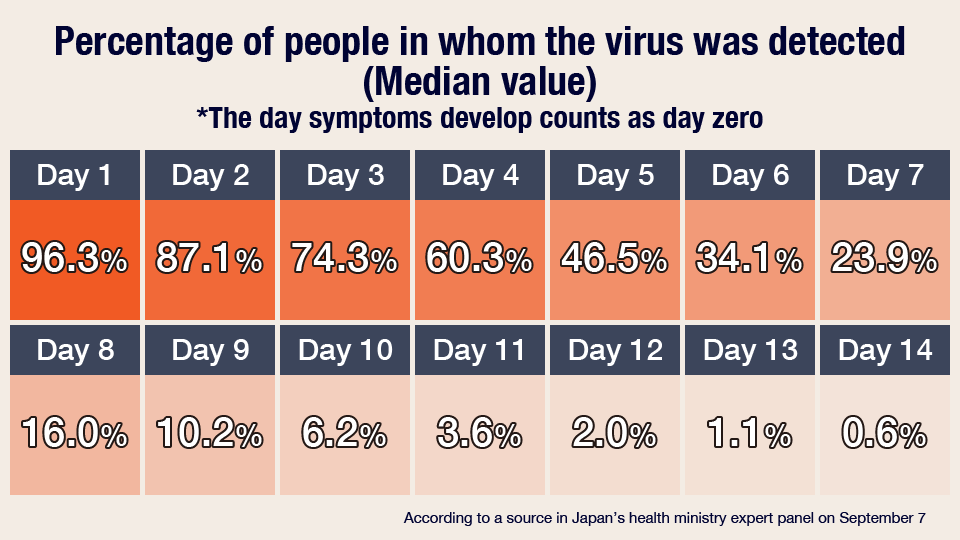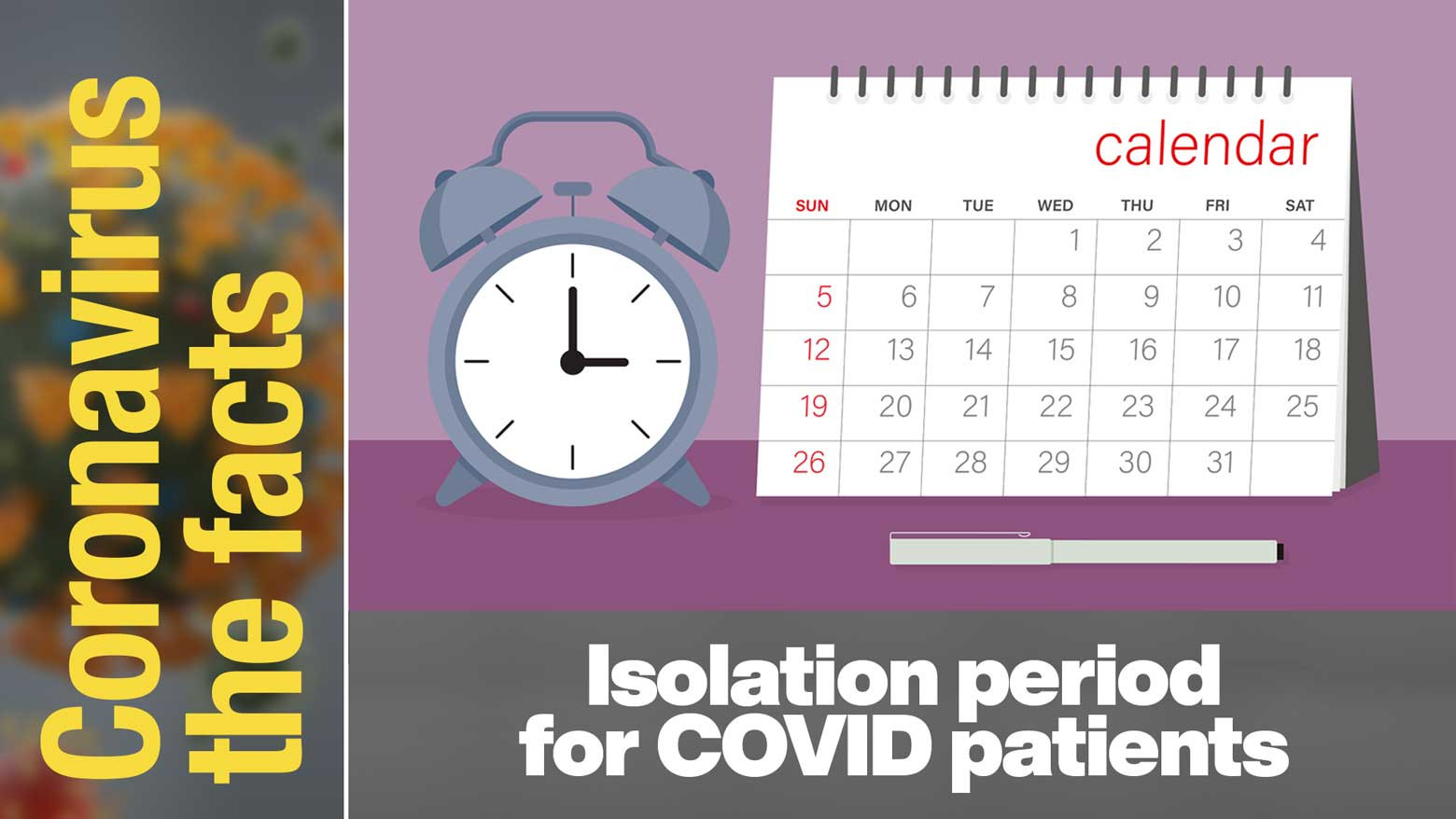This article is part of a series on important coronavirus-related information. Click here to read other installments: #Coronavirus the facts. Find the latest information on everything COVID-19.
Isolation period shortened
The Japanese government has shortened the required periods of self-isolation to help economic and social activities return to normal. The new measures took effect in early September. In principle, the isolation period for symptomatic patients is shortened to seven days from 10, while that for asymptomatic patients is reduced to five days from seven days, on the condition of a negative test result. Even so, experts are calling on people to act cautiously as the risk of spreading the virus could still remain.
Symptomatic patients
Symptomatic patients are allowed to leave isolation from the eighth day after seven days have passed after developing symptoms, and also if 24 hours have passed after their symptoms have eased.
Asymptomatic patients
When asymptomatic patients confirm a negative test result on the fifth day after giving a specimen, they can leave isolation on the sixth day.
*The risk of spreading the virus remains until about 10 days later for symptomatic patients and seven days for asymptomatic patients, so they must take thorough anti-infection measures, including avoiding contact or having meals with elderly people.
Patients in hospitals or elderly care homes
The period of isolation is the same as before for patients in hospitals or elderly care homes. They can leave isolation from the 11th day after symptoms developed, and also if it's more than 72 hours since the symptoms have become mild.
Reasoning behind the "7 days" rule
The decision to reduce the isolation period was based on data from a study by the National Institute of Infectious Diseases, which was conducted from November 2021 to January 2022, when the BA.1 Omicron subvariant had started to spread. According to the data shown at a meeting by a panel of experts advising Japan's health ministry on September 7, the amount of the virus from the seventh to 13th days (day zero is the day symptoms develop) was reduced to about one-sixth, compared to the third day. The data says the virus spreads even after the seventh day, but the risk of infecting others is considered to be decreasing.
Risks remain after 7 days
The study also indicates how long the virus may be detected in people who developed symptoms, as shown in the following graph.

As of the eighth day, when isolation ends under the new measure, the study shows viruses were detected in more than 10 percent of people.
One member of the expert panel also introduced another study by a research group including Harvard University that shows the virus was detected in more than half of people on the fifth day after developing symptoms and 25 percent of people on the eighth day.
Need to explain to the public the risks
Wakita Takaji, who heads the ministry's expert panel, emphasized the importance of communicating to the public that a certain level of infection risk remains and that each person must continue anti-infection measures and take action to reduce such risks.
This information is accurate as of September 20, 2022.
